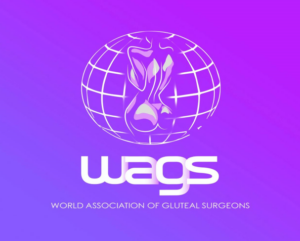Why is the Colombian Butt Lift (Fat Transfer to Glutes) Performed Under Ultrasound Guidance?
The Colombian Butt Lift, also known as the Brazilian Butt Lift (BBL), has rapidly become one of the most sought-after cosmetic procedures in the United States and globally. Fat transfer to the glutes has seen a staggering 77.6% increase in popularity worldwide. In 2020 alone, more than 21,800 fat transfers to the glutes were performed in the U.S., making it one of the leading body contouring procedures today.
While fat transfer to the glutes may seem simple—removing fat from one area of the body and transferring it to the buttocks—there is far more involved. The procedure requires skillful liposuction, precise fat processing, and careful injection techniques to ensure optimal aesthetic results and safety.
One of the most important innovations in this procedure is the use of ultrasound guidance during the fat injection process. Here’s why this technique has become so critical.
The Role of Ultrasound in Fat Transfer to Glutes
When performing a Colombian Butt Lift, the goal is not just to remove fat from one area, such as the abdomen or flanks, but to inject it safely and effectively into the glutes to create natural, proportionate curves. However, there are specific challenges that surgeons face when transferring fat to the gluteal region, particularly the risk of injuring blood vessels in the area. If fat is mistakenly injected into a blood vessel, it can travel to the lungs, causing a life-threatening condition known as pulmonary fat embolism.
Fat embolism typically occurs when fat enters the bloodstream, blocking vital blood vessels in the lungs. This can lead to severe complications or even death if not addressed immediately. Ultrasound guidance provides real-time imaging that helps surgeons avoid these “danger zones” in the glutes, ensuring fat is injected safely above the muscle, where it is less likely to interfere with blood vessels.
Safety First: Ultrasound and Injection Precision
At Eterna MD, we utilize ultrasound technology to carefully guide fat placement during the Colombian Butt Lift. The ultrasound ensures that fat is injected above the gluteal muscle and never directly into the muscle tissue, where complications are more likely to arise. Additionally, ultrasound allows for precise navigation through the gluteal region, reducing the risk of accidental fat embolism and ensuring a more predictable, safe outcome for the patient.
The Importance of Low-Pressure Liposuction and Fat Viability
Another critical component of the procedure is how the fat is aspirated (removed) during liposuction. At Eterna MD, we use low-pressure liposuction techniques to obtain viable adipose tissue, which is essential for long-term results. The more viable the fat, the better the cosmetic outcome and the longer the fat will remain in the gluteal area.
It’s important to note that fat transfer is not a one-time process. Over time, some fat may be reabsorbed by the body. However, the regenerative properties of adipose tissue play a role in preserving volume. Fat tissue is made up of three distinct zones:
- Surviving Zone: The outer layer of fat that remains healthy and integrates into the surrounding tissue.
- Regenerating Zone: The layer where the body starts to create new fat cells (adipocytes).
- Necrotic Zone: The inner layer of fat that dies and is absorbed by the body.
The key to long-term success is to maximize the amount of fat in the Surviving Zone while stimulating the Regenerating Zone to create new fat cells that maintain the volume of the transfer.
Minimizing Risks: Avoiding General Anesthesia and Promoting Faster Recovery
At Eterna MD, we perform the Colombian Butt Lift without general anesthesia to minimize risks and promote quicker recovery. This approach allows the surgeon to address any unintended movement or changes in the fat placement during the procedure. Additionally, the gluteal area is infiltrated with tumescent fluid, which helps reduce bruising and discomfort during the process.
The absence of general anesthesia also aids in a faster recovery time, enabling patients to resume their normal activities more quickly and comfortably.
Ensuring Optimal Fat “Take”: The Role of Blood Flow and Overall Health
For fat transfer to be successful, it is essential that the fat “takes” and integrates well into the recipient site. This is largely dependent on factors like blood flow and overall health. Patients with compromised circulation, such as smokers, may experience lower success rates as their blood vessels struggle to nourish the transplanted fat.
Surgeons must evaluate each patient’s health condition to ensure a suitable environment for fat grafting. Proper blood flow and healthy tissue conditions are necessary for fat to survive and thrive in the new location.
The Future of Fat Transfer: AI and Technological Advancements
While ultrasound guidance, low-pressure liposuction, and tumescent infiltration are current best practices, future advancements in artificial intelligence (AI) may further refine the procedure. AI could potentially help predict and optimize fat “take” and guide surgical planning in even more precise ways.
Conclusion: Comprehensive Approach for a Safe, Long-Lasting Colombian Butt Lift
In summary, achieving the ideal Colombian Butt Lift requires a combination of factors to ensure both safety and long-term results. From using ultrasound guidance to avoid dangerous blood vessels, to employing careful liposuction techniques for fat viability, every step plays a crucial role in the success of the procedure. Proper marking, sculpting, and fat injection techniques, combined with a focus on patient health and circulation, ensure that the transferred fat integrates successfully, resulting in a more natural and lasting gluteal enhancement.
As the field of fat transfer to the glutes continues to evolve, ongoing advancements in technology and surgical techniques will only improve the outcomes for patients seeking a safer, more effective procedure.




